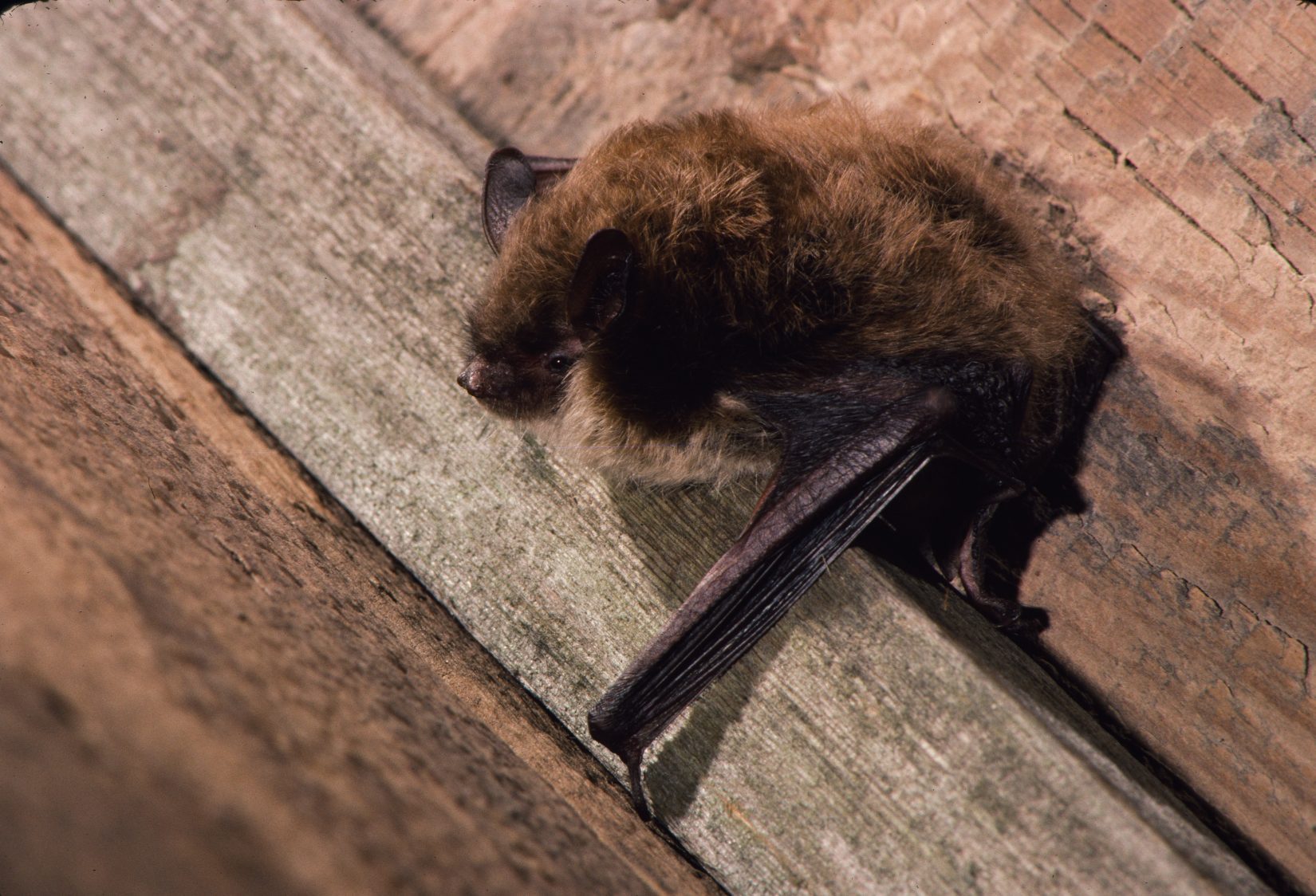Bats are the only wild carrier of rabies in B.C. and should never be touched or directly handled. Rabies can spread through just a drop of a bat’s saliva. Vaccinate your pet to protect them from contracting rabies.
If a bat has had any skin contact with a person, the bat must be euthanized and tested for rabies. If a bat has had contact with a pet, the bat may be sent for rabies testing. Contact your doctor, veterinarian or local public health authority immediately in cases of contact with a bat. Learn more about rabies transmission.
Bat populations are in decline, and injured bats can be rehabilitated. Call your local wildlife rehabilitator or our Animal Helpline at 1-855-622-7722 for advice on safely containing bats.
Help bats by also watching out for signs of White-Nose Syndrome (WNS). White-Nose Syndrome is a fungal disease that has been devastating bat populations across North America. The fungus grows on the nose and bodies of infected bats during hibernation and causes them to wake and use valuable energy at a time when they should be conserving it. White-Nose Syndrome has not been observed in B.C. yet, but the fungus that causes it was detected in the Grand Forks area in 2023.
Between November 1 and May 31, White-Nose Syndrome can be detected on dead bats if they are infected. Help detect White-Nose Syndrome by reporting dead bats and unusual winter bat activity to the BC Community Bat Program at 1-855-9BC-BATS (922-2287) or by email at info@bcbats.ca.
To learn more about coexisting with bats, read the BC SPCA’s best practices for bats.

